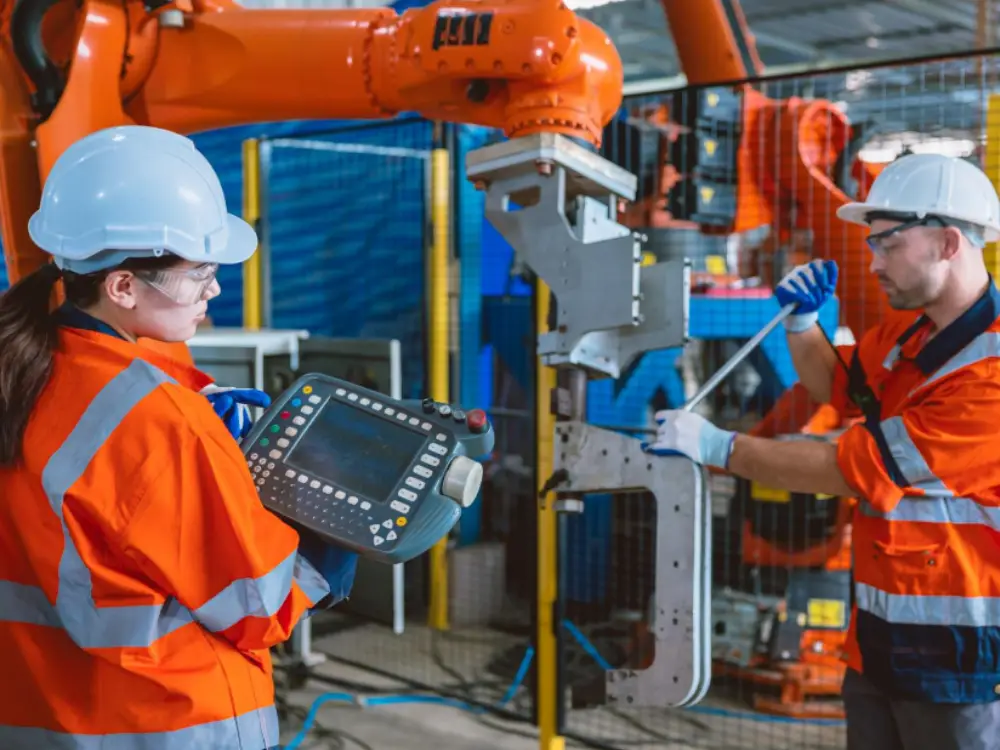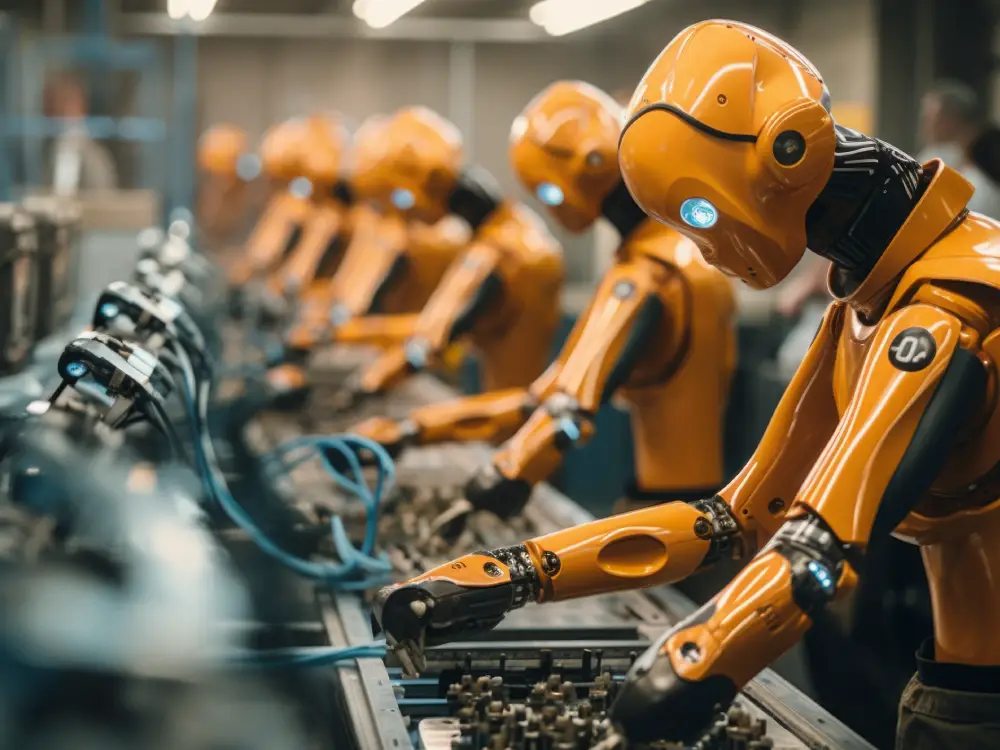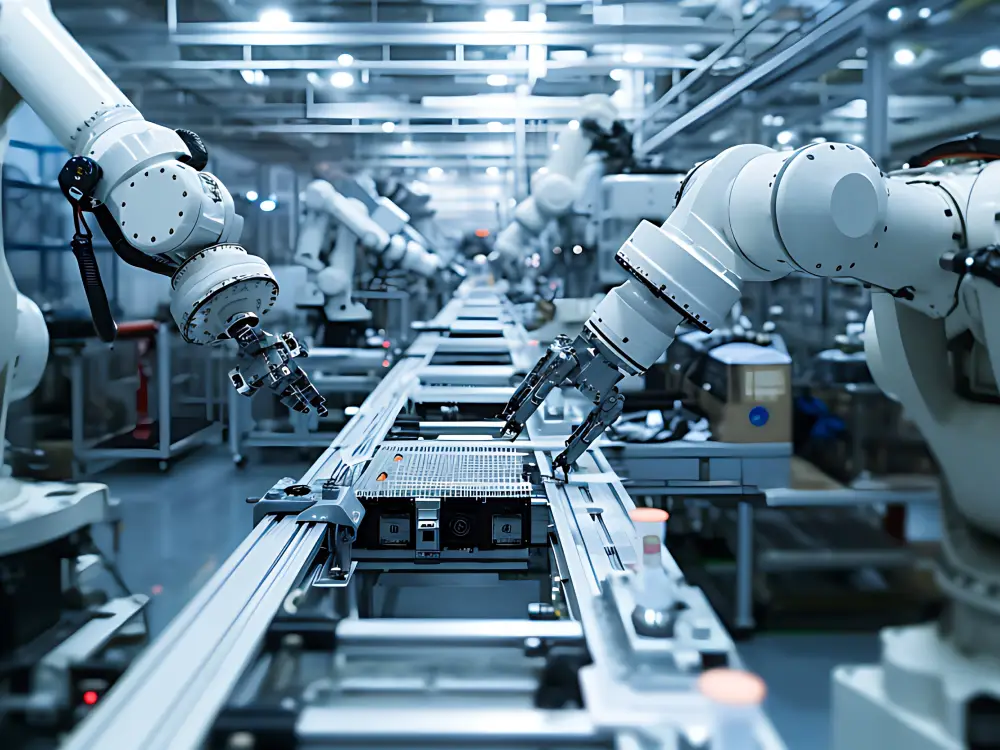Industrial electrical design is very important for modern factories, process plants, power distribution, and automation systems. As companies becoming smarter and use less energy, the electrical systems in industrial settings need to be more reliable, flexible, safe, and sophisticated.
This blog talks about the most important parts of industrial electrical design systems, such as their main parts, design rules, problems, new trends, and best practices.
What Is a Design System for Industrial Electrical Work?
The term “industrial electrical design system” refers to the planning, engineering, and building of the electrical infrastructure that makes industrial activities possible. This includes:
- Power generation or supply (generators on site, substations, and connections to the grid)
- Distribution of medium- and low-voltage
- Drives and motor control, such as AC motors, variable frequency drives, and servo systems
- Wiring for control and instrumentation
- Systems for safety and protection, include circuit breakers, relays, and fault detection
- Systems for grounding, bonding, and earthing
- Power quality, getting rid of harmonics, and reactive compensation
- Energy management, SCADA, and monitoring
In other words, it’s the whole electrical “backbone” that runs machines, tools, control systems, and the infrastructure that supports them in an industrial setting.

Main Parts and Subsystems
Power Supply and Change
- Grid connection or substation: The building must be able to connect to a utility grid or supply without any problems. This includes transformers (that often lower medium voltage to levels that can be used), switchgear, protection, and metering.
- For essential loads, you may need diesel or gas generators, uninterruptible power supply (UPS) systems, and other backup power sources on site.
- Transformers are used to lower voltage to distribution levels, isolate circuits, and keep the load balanced.
Network of Distribution
- Power goes from the transformer to different areas or loads through busbars, switchgear, and distribution panels.
- It is very important to get the right size, route, insulation, and protection for cables, conduits, and trays.
- Segmentation and zoning: For safety, maintenance, and fault containment, the plant is divided into electrical zones.
Control and Drives for Motors
- Motor starters include soft starts, starters, and contactors.
- Variable-Frequency Drives (VFDs) help with speed control, saving energy, and better process management.
- Overload relays, phase failure relays, and ground fault protection are all types of motor safety devices.
- Control wiring and feedback: encoders, sensors, and wiring to control cabinets.
Automation, Control, and Instrumentation
- PLC, DCS, and PAC systems
- Sensors, transducers, and switches are examples of field instrumentation.
- I/O systems: signals in analog and digital form
- Cabling, shielded wire, and route separation: Keeping noise and interference from happening and making sure the signal stays clear.
Safety, Protection, and Handling Errors
- Fuses, circuit breakers, and protective relays
- Studies and ways to reduce arc flare
- Ground fault protection and residual current devices (RCDs)
- Design for redundancy and failover
- Safety PLCs, interlocks, and emergency stop circuits
Grounding, Bonding, and Earthing
- Earthing systems, like TT, TN, and IT systems, depend on where you are.
- Bonding equipment such that it is at the same potential
- Surge arrestors and lightning protection
- Protection and noise reduction
Power Quality and Conditioning
- Harmonic analysis and reduction (active or passive filters)
- Regulating voltage, making up for it, and managing reactive power
- Power factor correction (PFC) capacitors or synchronous condensers
- Surge protection, transient suppression, and filters
Energy Management, Control, and Monitoring
- SCADA, HMI, and dashboards
- Telemetry, recording, and energy meters
- Alarms, keeping track of events, and trending
- Integration of predictive maintenance
Design Principles and Things to Think About
First, Safety
Electrical systems can cause shocks, arc flashes, fires, and damage to equipment. Design must follow all applicable rules and standards, such as IEC, NEC, IEEE, and local laws. It is important to have the right amount of space, access, labeling, safety devices, and safety interlocks.
Dependability and Backup
Factories can’t afford to take a break, even for a little while. That’s why systems have backups, like auxiliary power lines, standby generators, or batteries, to make sure that important machines never go down.
Flexibility and Scalability
You should be ready for future adjustments or additions to the procedure. The design should make it easy to change, add parts, and make it modular.
Energy Use and Efficiency
Electricity is a big cost of doing business. Good design reduces losses in cables, transformers, and drives. It also incorporates power factor correction and employs drives or soft starts to save energy. Also, the voltage drop and the size of the conductors need to be perfect.
Keepability and Accessibility
Design should make it easy to get to panels, breakers, and places where repair is needed. For long-term maintenance, cable routing, labeling, modular panels, and documentation are all very important.
Integration of Control and Automation
The electrical design must work well with automation and process control. This means that the signals should be routed, shielded, separated, and compatible with PLC, SCADA, and fieldbus systems.
Following the Rules and Protecting the Environment
Think about the weather (temperature, humidity, corrosive environments), noise, electromagnetic compatibility (EMC), insulation ratings, and following safety and environmental rules.
Problems with Industrial Electrical Design
Designing for industry is harder than designing for homes or businesses. A few of the main problems are:
- High complexity and size: there are a lot of loads, motors, and control zones.
- Harmonics and power quality problems: Nonlinear loads, such drives, cause distortion.
- Signal noise and electromagnetic interference (EMI), especially in sensitive instruments.
- Vibration, dust, wetness, corrosive chemicals, and very high or very low temperatures are all examples of harsh environments.
- Coordination of protective devices: Making sure that errors don’t spread by using selective tripping.
- Load growth and change: future expansions, changes to machinery, and changes to processes.
- Safety in integration: safely combining electrical design with mechanical, process, and control systems.
- Standards, rules, and certification: distinct countries or areas may have distinct codes.
Trends and Technologies Today
The design of industrial electrical systems is changing. Some of the trends altering how these systems are designed and run include:
- Microgrids and smart/digital grids
- IIoT and Predictive Diagnostics
- Power Electronics at a Higher Level
- Integration of Renewable Energy and Storage
- Simulations and Digital Twins
- Electrical Systems That Are Modular and Prefabricated
- Cyber-Physical Safety
How to Plan an Industrial Electrical System
- Collecting requirements / Load survey
- Initial layout and single-line drawings
- Studies of short circuits and faults
- Sizing cables and conductors and figuring out voltage loss
- Settings for protection coordination and relay
- Design for grounding or earthing
- Analysis of power quality and harmonics
- Integration of control and instrumentation
- Safety, interlocks, and systems for emergencies
- Drawings and details
- Check, confirm, and simulate
- Buying, building, and putting into use
- Running, watching, and fixing
Best Practices and Advice
- Always make the margins bigger than they need to be (for capacity, short runs, and future loads).
- To make maintenance easier, use common panels, modules, and labels.
- Use the right shielding and routing to keep power and control wiring apart.
- Use strong transient suppression and surge protection.
- As loads or topology change, make sure to check protection coordination on a regular basis.
- Write down everything: as-built drawings, settings, and test results.
- Give concise instructions and train the people who work on the trains.
- Do infrared thermography, partial discharge testing, and regular inspections.
- Stay up to date with current advancements and industry standards.
Example Use: Factory
Think about a medium-sized factory that makes machines. The design could include:
- 11 kV grid hookup to main transformer to 415 V
- Main switchgear and bus duct to send off electricity
- VFDs for conveyors, pumps, and compressors in motor control centers (MCC)
- PLC and SCADA control machine cells
- Power factor correction banks to keep things running smoothly
- Harmonic filters to deal with distortion in nonlinear loads
- Extra generator for important industrial lines
- For safety, there are grounding grids and lightning arresters.
- Condition monitoring sensors that send data to a system for predictive maintenance
The electrical designer makes sure that the system is safe, reliable, and uses energy efficiently by doing simulations and coordinating protection.
Importance of Designing Electrical Systems
Designing an electrical system requires more than just a technical or legal need. Its importance affects practically every part of running a business, from safety and cost to sustainability, reliability, and competitiveness.
Safety and Following the Rules
A safe electrical system is one that is well-designed. Bad design can cause problems like electric shock, arc flash, fires, short circuits, or damage to equipment.
Dependability, Uptime, and Continuity of Operations
Industrial plants generally run all the time. When electrical problems cause downtime, it can be quite expensive.
Saving Money and Energy
Accurate load assessment, cable sizing, and reducing waste in distribution all lower both capital and operating costs.
Quality, Performance, and Productivity
Accurate electrical design ensures clean power and stable operation of all machinery and systems.
Adaptability, Growth, and Future-Proofing
Industrial settings evolve, and designs must allow modular, expandable, and IoT-ready infrastructure.
Effects on the Environment and Sustainability
Efficient systems reduce energy waste and greenhouse gas emissions.
Costs of Maintenance and Lifecycle
Well-documented systems are easier, faster, and safer to maintain.
Reputation and Competitive Advantage
Efficiency, reliability, and safety directly improve brand credibility and ESG compliance.
The Business Value of Designing Electrical Systems
- Lower Operating Costs
- More Reliable and Longer Uptime
- More Efficient Use of Assets
- More Safety and Less Risk
- Compliance and Certification
- Competitive Advantage
- Support for Future Growth
- Environmental and Sustainability Benefits
- Better Monitoring, Control, and Decision Making
Financial and Market Trends That Support Strong Electrical Systems
The market for industrial electrical parts is rising quickly. There is a growing need for parts including switchgear, transformers, relays, and breakers.
Also, the electrification of industry is increasing quickly over the world. Companies that are good at designing electrical systems are likely to benefit as markets move toward electric and automated systems.
Businesses are even more likely to embrace higher standards in electrical system design when they invest in infrastructure, sustainable energy, and rules that make energy use more efficient.
Conclusion
Designing electrical systems for industry is hard and very important. A well-planned electrical infrastructure not only dependably powers industrial activities, but it also allows for flexibility, energy efficiency, safety, and future growth.
Modern industrial design needs to combine strong electrical engineering basics with new technologies like smart systems, digital twins, IIoT, and renewable integration.








